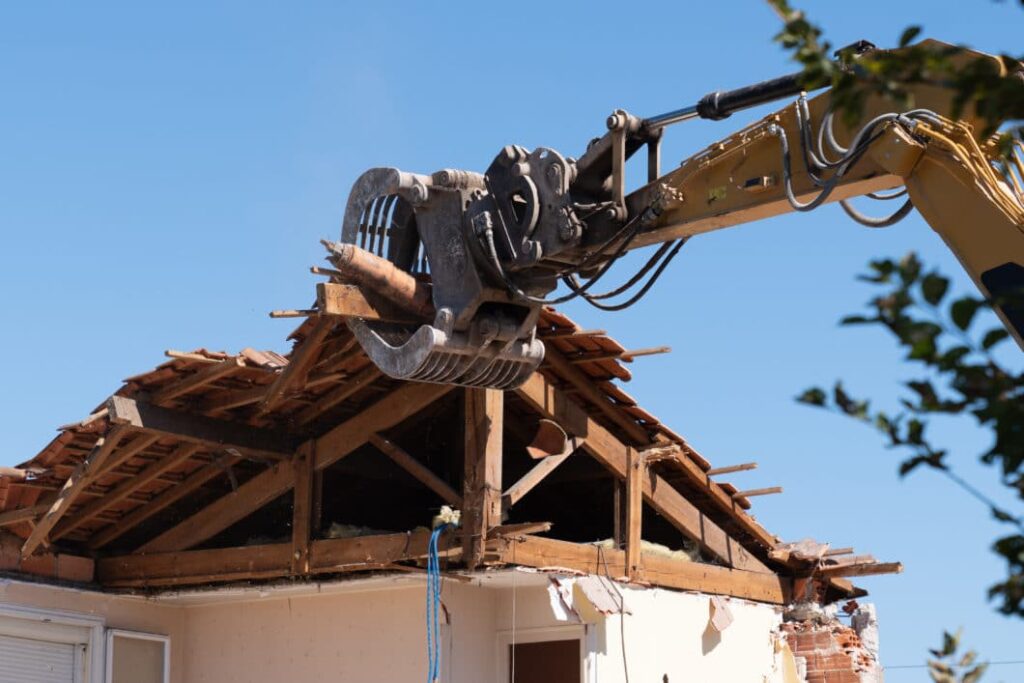Moving never enters the thought process when a homeowner’s lifestyle becomes significantly intertwined within the community, and neighbours grow to be more like family than acquaintances. The house might need to be updated, with plenty of work that needs to be done to meet modern standards.
Or, perhaps, the family is simply outgrowing the capacity. Still, the challenge lies in finding a solution, such as a knockdown rebuild, that will allow remaining in the home.
The demolishing of a tired property that no longer adequately serves a family’s needs in favour of constructing a brand-new modern home that does, is quickly becoming a popular method for keeping a beloved property instead of searching for something better and moving to a new location.
The option can prove cost-efficient and more straightforward than many people believe. Those who like their neighbourhoods but have a home that requires significant upgrades could find that rebuilding will resolve their situation by providing a house to accommodate their lifestyle more ideally.
Let’s look at some logistics before committing to a knockdown rebuild as your chosen housing solution.
Knockdown Rebuild: Everything You Need to Know Before Starting Your Project
More homeowners are choosing knockdown rebuilds instead of extensive renovations or adding on and rather than moving from the property they’ve grown attached to.
Costs associated with renovations, as far as dollar/square metre, continue to rise, making the option of knockdown with a new build a cost-efficient attractive choice.
While the house might no longer meet basic needs, the property more than fits your lifestyle and circumstances; it’s merely a matter of designing an adequate home to match. Learn everything you need to know before undertaking a project of this size at https://stylecurator.com.au/things-you-need-to-know-before-undertaking-a-knock-down-rebuild/. The pros commonly associated with choosing this solution can include the following:
- Knowing the design features that don’t work allows greater control over the project so you can achieve a house to meet your needs.
- The contractor will have access to the initial work quality and an understanding of the construction processes without needing to guess whether these were sound.
- The homeowner leads each aspect of the project, allowing better budget management.
- The design’s scope will determine how quickly the project Generally, a rebuild goes smoother and faster than renovating an older house.
While the knockdown/rebuild process seems relatively straightforward, it’s still a big job. When following the appropriate strategies, achieving your dream house can involve minimal stress.
The legalities and guidelines associated with demolishing a house and rebuilding need to be researched along with local council regulations and potential planning restrictions that could impact the project.
The council will guide you through your process and help with traffic management planning, something that could become a concern with the build. When designing the house, working closely with the contractor to make the home suitable for your current lifestyle will be helpful.
Selecting a qualified builder
A few things to consider when looking for a qualified builder are their previous work projects and whether the professional is registered as a Master Builder. The recommendation is to always obtain three or more quotes before committing to a final quality choice that fits your budget.
At this point, a contract will be signed with the terms and conditions explicitly detailed for everyone to understand. A primary component of a good working relationship is clear communication.
After thoroughly reading and understanding the contract, it should comply with the “1955 Domestic Building Contracts Act” requirements.
The time frame for knockdown
Knockdown of the old house can happen relatively fast, but a few steps must be handled before this part can occur. Demolition requires a permit, and the primary systems, including telephone, gas, and electricity, must be shut off.
The local council should also provide an “asset protection permit.” This covers the potential for damage to “driveway crossovers, footpaths, dirt run-off or silt into stormwater drains.”
While you, as the homeowner, can arrange a knockdown permit, the contractor acting on your behalf will often coordinate the demolition process.

The length of time for the knockdown/rebuild can vary
Variables will contribute to the project’s longevity, including weather conditions, design complexity/size, site challenges, and on. The standard roughly ranges between “eight to 12 months”; however, if planning approval is required, it can take considerably longer.
Financing A Knockdown Rebuild
Once your house has been knocked down, where will the financing come from to rebuild the new one? Rebuilding boasts the potential for being a cost-efficient approach to getting the home that accommodates your lifestyle on the property in the neighbourhood you desire.
The cost will primarily depend on the style and size of the design and materials for the property, with the potential for ranging up to $800,000 for a rebuild. With the knockdown, a rough estimate is approximately $50,000, but many variables can play into that cost, including the potential for asbestos removal.
The ideal method for discerning the amount of capital needed would be to use an online calculator to get a more accurate estimate with your specific criteria. Go here for costs associated with a knockdown rebuild in the Melbourne region. There are a few types of financing methods to try with knockdown rebuilds. These include the following:
Your investment equity is an excellent financing option
A knockdown rebuild can readily be funded from the equity in a home or from the property if you’ve lived there for a significant period. Equity is the difference between the mortgage balance owed and the property value. A bank or loan provider will allow financing with a line of credit.
The amount will depend on your taking lenders’ mortgage insurance (LMI), allowing an 80 percent loan-to-value ratio (LVR) or greater following the property valuation. Securing an equity loan will depend on whether the lender believes you will be able to repay the balance if interest rates were to increase.
A construction loan is a viable option
The construction loan boasts of being an excellent option for financing a knockdown rebuild if you intend to live in the house or maintain it as an investment property. Progress payments are released to the builder upon completion of each phase of the construction process.
During construction, repayments consist of interest only. Once the entire project is satisfactorily completed, the loan transitions into a standard home loan. The loan providers or banking institutions want a construction loan application accompanied by a signed building contract from a licensed builder.
You must already have the council’s approval, and the builder needs to have “correct” insurance. The lender anticipates that the builder is not stretched thin but has a solid financial standing instead.
Final Thought
Considering the financing options should be one of the primary factors when planning a knockdown rebuild, establishing the budget, and then working on the logistics for the actual project when these aspects are secured.
Initially enlisting the services of a qualified, registered, and credentialed builder, one who can guide you through the process, is wise. Plus, researching the regulations expected with the local council will ensure compliance throughout the project.






